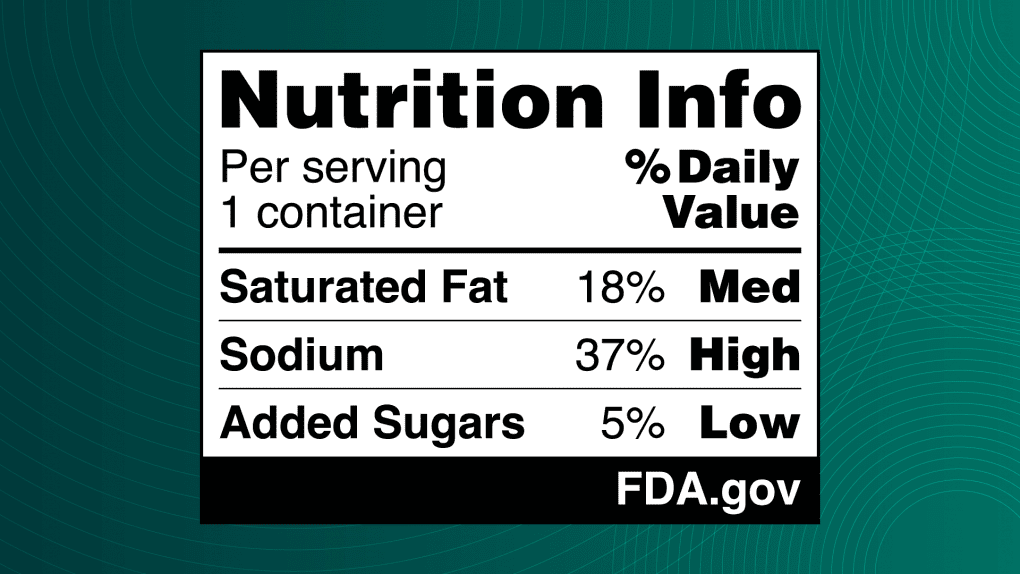In a move to improve public health, the U.S. Food and Drug Administration (FDA) announced a proposal to require front-of-package (FOP) nutrition labeling on most packaged foods.
This initiative aims to provide consumers with clearer information about critical nutrients linked to chronic diseases, such as heart disease and diabetes.
The proposed label, known as the “Nutrition Info box,” will present information on saturated fat, sodium, and added sugars in a straightforward format.
Foods will be classified as having “Low,” “Med,” or “High” levels of these nutrients, making it easier for consumers to make informed choices at a glance.
“The science on saturated fat, sodium and added sugars is clear,” said FDA Commissioner Robert M. Califf, M.D. He emphasized the urgency of the proposal, noting, “Nearly everyone knows or cares for someone with a chronic disease that is due, in part, to the food we eat. It is time we make it easier for consumers to glance, grab and go.”

READ: USDA Recommendations for Storing Food in the Fridge
Chronic diseases are a pressing issue in the U.S., affecting approximately 60% of Americans and contributing significantly to the nation’s staggering $4.5 trillion annual healthcare costs.
The FDA’s initiative is part of a broader effort to address this crisis, particularly as research highlights the role of excessive consumption of certain nutrients in these diseases.
Jim Jones, FDA Deputy Commissioner for Human Foods, stated, “Food should be a vehicle for wellness, not a contributor of chronic disease.”
He added that the new labeling could encourage manufacturers to reformulate their products to be healthier, further supporting consumer health.
The agency said the proposal is grounded in extensive research, including a study involving nearly 10,000 U.S. adults.
The research, aimed to evaluate consumer responses to various FOP label designs, showed that a black-and-white Nutrition Info scheme with percent Daily Values was the most effective in helping consumers identify healthier food options.
This labeling initiative is part of the White House’s National Strategy on Hunger, Nutrition, and Health, which aims to reduce diet-related diseases by 2030.
The proposed rule would require food manufacturers earning $10 million or more in annual food sales to implement the new labels within three years of the final rule’s effective date, while smaller businesses would have four years to comply.
READ: Food Bank vs. Food Pantry: What’s the Difference?
As the FDA moves forward with this proposal, it aims to empower consumers with clearer information, ultimately fostering healthier eating patterns and improving nutrition across the country.
Comments on the proposed rule can be submitted electronically to http://www.regulations.gov here by May 16, 2025.

